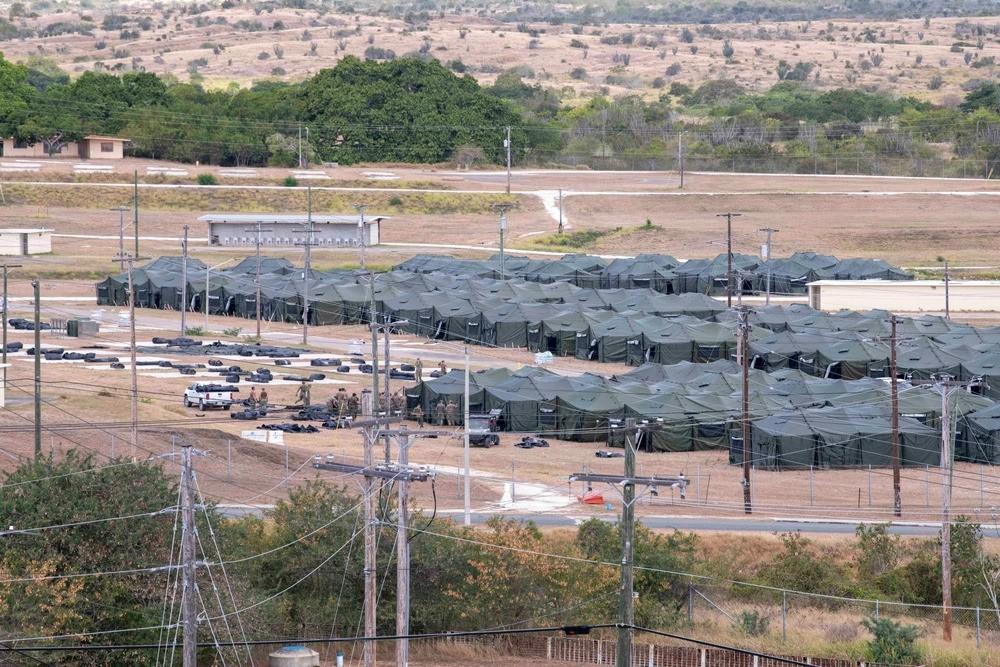The U.S. government is sending some nonviolent migrants to Guantanamo Bay, Cuba, even though the Trump administration had originally said the facility would be used only for the most dangerous criminals. According to government documents and U.S. officials, some of the migrants being sent there have no serious criminal records or any criminal history at all.
Trump’s Plan for Guantanamo
Last month, President Trump ordered Guantanamo Bay’s U.S. Naval Base to be used as a large-scale immigration detention center. He said it would hold the “worst” migrants, including those with violent criminal records. Since then, government officials have highlighted military flights transporting dangerous criminals and suspected gang members, including alleged members of Tren de Aragua, a gang that started in Venezuelan prisons.
Low-Risk Migrants Also Sent to Guantanamo
Documents show that while some high-risk individuals, such as criminals and gang members, are being sent to Guantanamo, the government is also sending low-risk migrants. These are people who are in the U.S. illegally but have no history of violent crimes. Some have never been arrested but are being deported due to immigration violations, like crossing the border without proper documents.
Unlike high-risk detainees, who are placed in Guantanamo’s maximum-security prison, low-risk migrants are being housed in a separate area called the Migrant Operations Center. This facility is more like a dormitory and has rooms with restrooms.
Past Use of the Migrant Operations Center
The Migrant Operations Center has traditionally been used by the U.S. government to house asylum-seekers who were caught at sea while waiting for resettlement in other countries. A Homeland Security spokesperson confirmed that Guantanamo is now also being used to hold migrants with final deportation orders. The spokesperson stated, “Every person at Guantanamo has a final deportation order and committed a crime by entering the U.S. illegally.”
Expanding Guantanamo’s Migrant Detention Capacity
In the past two weeks, officials have been working to expand detention facilities at Guantanamo to hold up to 30,000 migrants. Because space in the existing facilities is limited, U.S. service members have started setting up tents to accommodate more people. A Pentagon-released photo from February 6 shows these tents being built.
Since the start of this operation, military flights have been transporting groups of migrants to Guantanamo daily. In the past nine days, there have been eight flights, each carrying about 15 detainees. As of Tuesday, nearly 100 migrants were being held at Guantanamo, all from Venezuela.
Challenges in Deportation Efforts
Homeland Security Secretary Kristi Noem has said the detainees will remain at Guantanamo until they can be deported, but it’s unclear when that will happen. In recent years, Venezuela has refused to accept deportation flights from the U.S., citing American sanctions against its government. However, a recent agreement with the Trump administration allowed Venezuela to send two planes to Texas this week to pick up about 200 Venezuelan migrants and return them home. No such flights from Guantanamo have been announced.
Mixed Reactions to Guantanamo Detentions
Some Republican lawmakers have praised the Trump administration’s decision to use Guantanamo for migrant detention. However, immigrant rights groups have strongly criticized it. They argue that Guantanamo is being used as a “legal black hole” to detain migrants without access to lawyers.
Even though Trump officials initially claimed Guantanamo would only hold “the worst of the worst,” the facility is now being used to send a strong message: anyone in the U.S. illegally could face detention and deportation, regardless of whether they have a criminal record.


